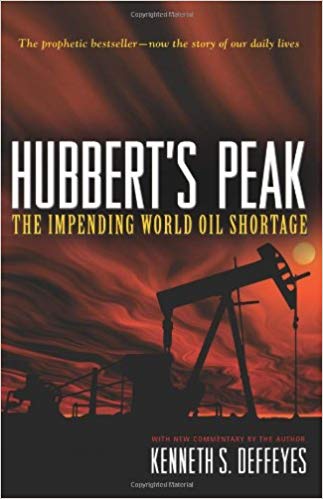This is the first of three books that the late geologist Kenneth S. Deffeyes, who passed away a year ago this week, wrote about the coming global oil crisis. The goal of these books is to provide readers a rudimentary understanding of oil, where it came from and what’s involved in finding and producing it, in order to raise awareness about the peril we face as oil depletes. All three books deftly achieve this aim courtesy of Deffeyes’ expertise, his gift for communicating science information and his great wit.
Part of what makes the books so accessible is that they’re almost as much autobiographies as textbooks, allowing us to get to know their author personally. Chapter one of Hubbert’s Peak tells of how Deffeyes’ career began at the prestigious Shell Oil research lab in Houston, Texas, in 1958. An oilman through and through, he felt at home in the field; but while at Shell, he met someone whose research persuaded him that the U.S. oil industry didn’t have long to live. The person in question was Marion King Hubbert, a preeminent geoscientist who today is best known for his theory of peak oil. In 1956 Hubbert accurately predicted that U.S. conventional oil production would peak between 1965 and 1970, then begin an irreversible decline. Based on Hubbert’s numbers, Deffeyes concluded that the U.S. oil industry would shrink drastically in coming decades.

So, in the late 1960s, he decided to leave the oil business and become a geology professor at Princeton University. In 1997, after teaching there for 30 years, he retired, became an emeritus professor and commenced writing his books about oil. By that time, Hubbert, who had become a close friend of Deffeyes’, had long since passed away.
…click on the above link to read the rest of the article…